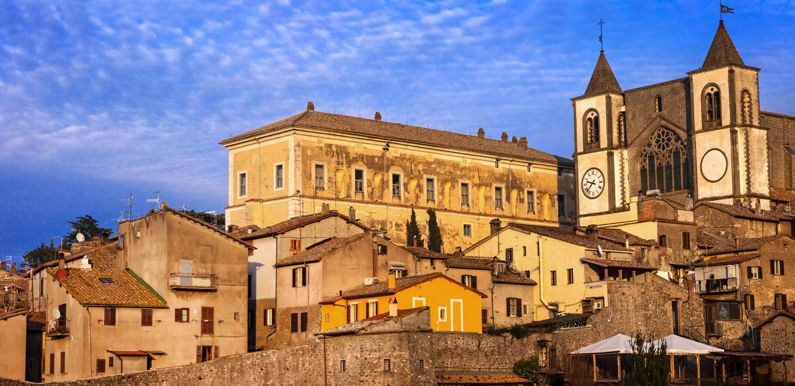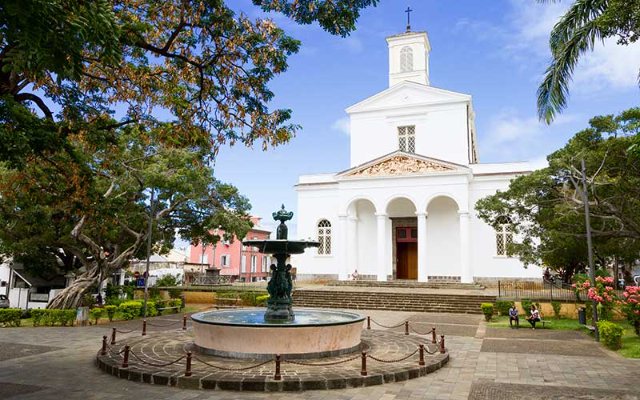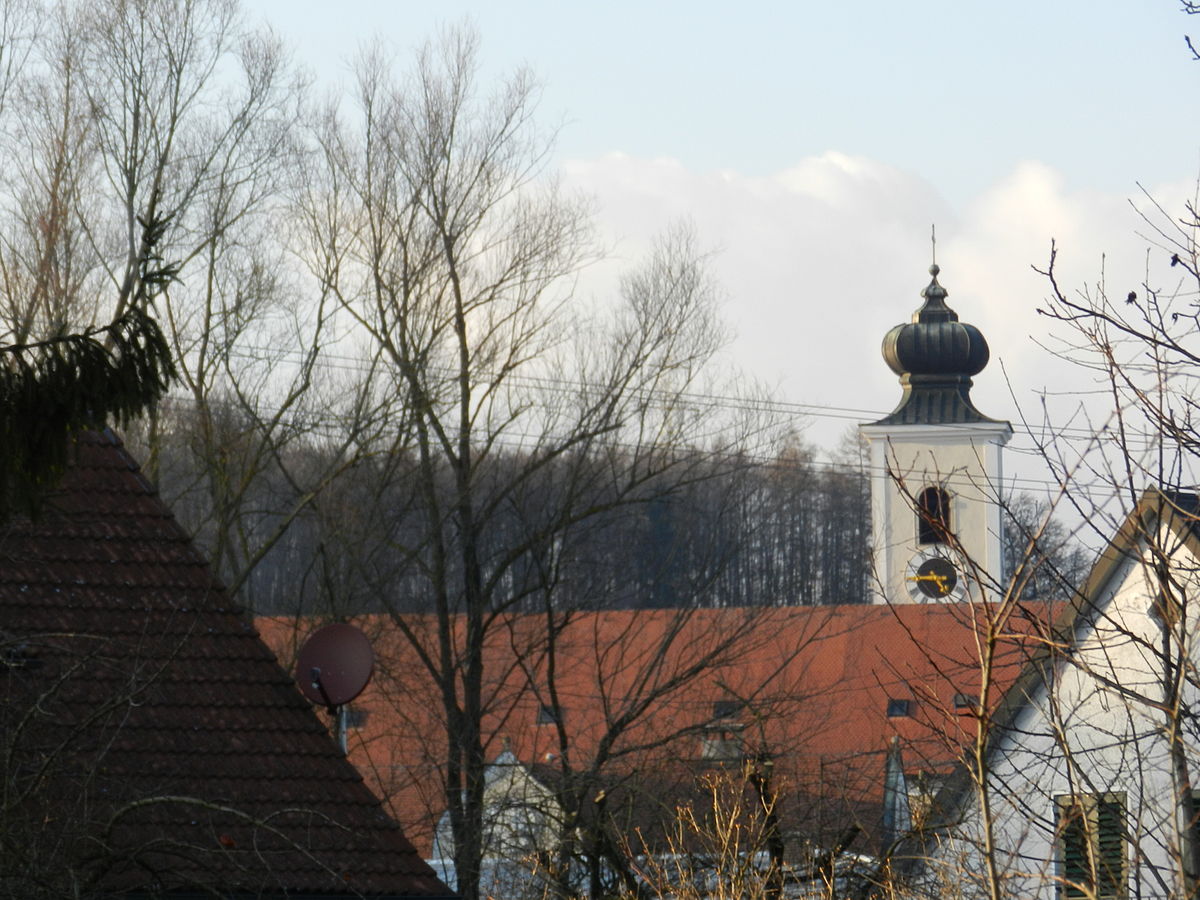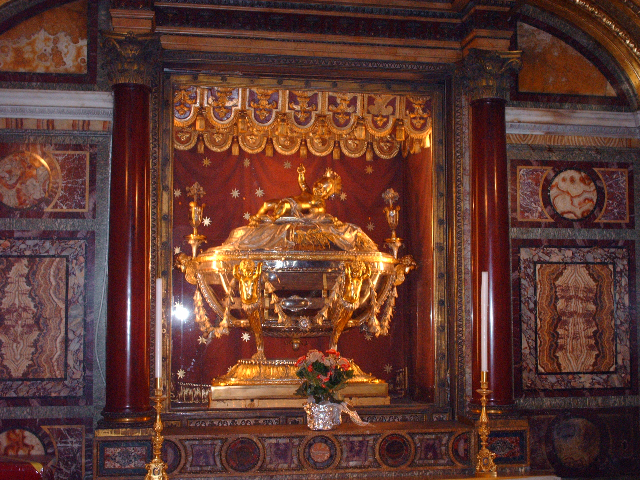The Cistercian Abbey of San Martino al Cimino is a Catholic place of worship in Viterbo. Located in the homonymous hamlet of San Martino al Cimino, it was founded in the thirteenth century on the initiative of the Cistercian monks of the primitive abbey of Pontigny, but was closed in 1564. A beautiful facade makes the structure immediately recognizable. Imposing and enclosed by two bell towers, the façade invites visitors to admire and contemplate the beauty of the church. The two bell towers, dating back to the mid 1600’s, guard a clock and a sundial. Framed by the mighty towers, the arched portal of the church of San Martino is dominated by the coat of arms of Innocent X. To give more light inside the church there is a large window consisting of two large single acute windows, surmounted by a characteristic rose window with eight petals.
Admiring the church from outside you can already feel a feeling of peace and tranquility, elements that remain constant even after crossing the threshold. The interior of the church is immediately austere and solemn, illuminated by a soft light that reflects the grey of the materials used to create the structure. Gothic style motifs, with severe lines, blend with less rigid elements typical of more recent architectural styles. The interior of the church of San Martino is, in fact, the result of the union between the original components and those resulting from the restoration and modification work carried out in the 15th century.
The plan of the church is in the shape of a Latin cross, with three naves: the central one is more illuminated than the lateral ones, which remain rather dark. Among the elements that enrich the church are an elegant baptismal font and a wooden inlaid panel, where a fragment of a fresco with the Baptism of Christ appears.
Simple, in line with the primitive Cistercian construction, is the altar: decorated with small arches on smooth columns.
The long history of the church and abbey of San Martino, according to historical sources, began as early as the 9th century.













